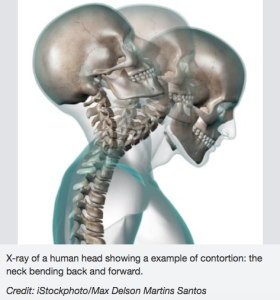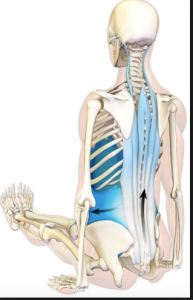Most Common Misconceptions String Players Have About Posture & Muscle Strain in Shoulders, Back & Neck
Share
 by Rozanna Weinberger
by Rozanna Weinberger
It amazes me when speaking to students that say they have excess tension in their playing that causes pain but feel at the mercy of the tension because they don’t even know when it begins. Its true once we’re in the state of compromised physical patterns, the challenge is to relieve the pain and self adjust. Being able to do so, even in a performance situation is really the ideal. But I also believe players are less helpless than they believe. Discovering that the inefficient patterns in playing a violin or viola occur in preparation to play and contribute to a host of new problems once we start to play.
The truth is most inefficient patterns occur as we prepare to play. The way we organize ourselves to hold the instrument and prepare the bow arm to produce a sound are hardwired for the very first impulse to raise our arms in preparation.

The natural unforced weight of head is a simple and effective way to secure instrument against the shoulder & clavicle, so long as there is no tension in neck, rather the passive weight. Head should be facing forward with very slight tilting to the left when playing.
But its even more interesting that some of the most crucial ‘practicing’ and mindful awareness needs to happen as we’re ‘positioning’ ourselves to play – the moment when we hyperextend the shoulders to engage our bow arm or thrust the left shoulder forward in an attempt somehow hold the instrument.
Its also in that split second when we thrust the head forward in the mistaken belief it will enable us to secure the instrument against our shoulder, when in fact the weight of the head can easily be accessed without jutting the neck and chin forward. And the more one hyper extends the limbs to play, the more ones technique will be based on movements of the limbs rather than accessing the entire torso..Indeed just getting ready to play is when some of the key problems happen and worst of all, once we’ve contorted our bodies its very difficult to change after we start to play. Thats why its valuable to be hyper vigiliget about everyone movement we make from resting position to picking up our instruments because it forms the basis of most of our technique.
The Unfailing Function of the Abdominal Muscles
In contemporary society people try to work out in the gym in hopes of getting in good physical shape. When it comes to improving our abdominals people often do sit ups to strengthen that muscle group. Yet considering their function and how the abdominals can improve our overall ability to carry ourselves, it is an important consideration and perhaps not discussed enough except when doing Pilates, Gyrotonics, Yoga or other forms of exercise that address lengthen the limbs and functionality.. For great posture, we don’t just need strong abdominals, we need them to lengthen and support our upper bodies effectively. If they don’t do this, other problems will occur as a result of compensation, such as raising and tensing the shoulder in the mistaken belief we holdup our upper bodies by elevating our shoulders. Other problems will include slouching.
And when it comes to string playing the use of the abdominal muscles is almost never addressed. For sure the abdominal muscles are never discussed in technique books. And yet the abdominal muscles are so crucial in supporting our torso and lengthening out the space between the vertebrae. This support is at the heart of being able counter the effects of gravity when supporting our instruments and at the heart of being able to effectively balance a violin or viola.

When we press down into the ground with our hands we can access the feelings of lifting and support the abdominal muscles contribute in supporting posture
Awareness of the Spine is Crucial
Stretching is another misconception. When it comes to supporting our upper body effectively its not just a matter of standing taller, but noticing and articulating the natural curvature and straightening of the spine. We need to cultivate the ability to access the sensations of our spine, to the extent that we can feel where we are slumping, where we are compressing the vertebrae and as well as the ability to elongate the spine without leaning backwards or forwards in excess. The curious student will discover many ways to develop kinesthetic awareness as well as ways to make the beneficial connection when it comes to playing with ease.
But when these supporting muscles are able to support the torso sufficiently, the shoulder and its accompanying bones, muscles & ligaments will do what gravity encourages and rest atop the rib cage. They may move and occasionally be elevated but the are a cog in the wheel and not the fulcrum. 
Some find it difficult to isolate the movements of the rib cage vs. the shoulders and arms. A simple motion study of curling and lengthening of our spine with hands clasped behind the head, can be useful in isolating those muscles needed.
